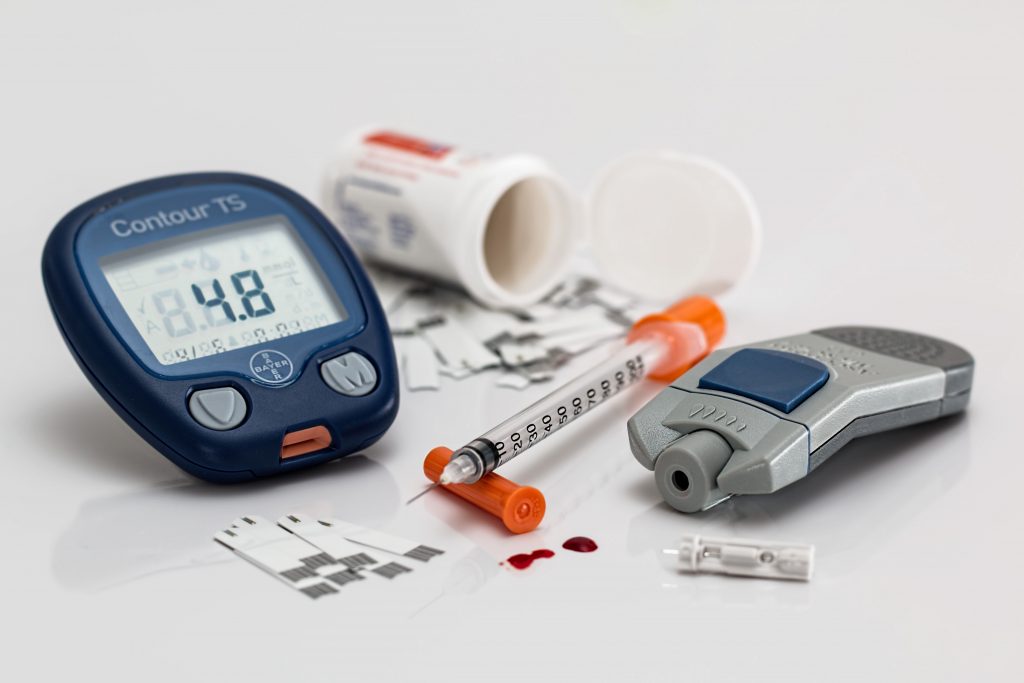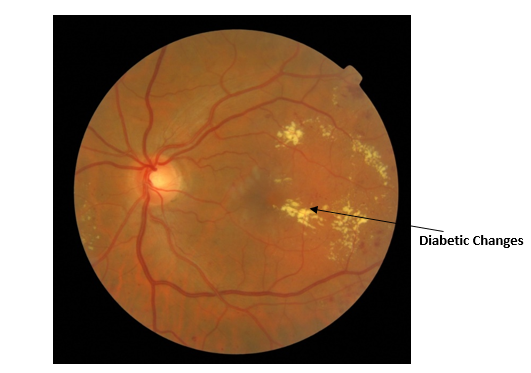Diabetes and your eyes
What is Diabetes?
Having Diabetes which is not controlled can not only affect your body, it can also affect your eyes.
Type 2 diabetes occurs when
- You do not make enough insulin for your body’s needs or
- The cells in your body do not use insulin properly. This is called insulin resistance. The cells in your body become resistant to normal levels of insulin. This means that you need more insulin than you normally make to keep the blood sugar (glucose) level down, or both can happen at the same time.
Type 2 diabetes is much more common than type 1 diabetes and develops mainly in people older than the age of 40 (but can also occur in younger people).
- In England, about 1 in 10 people aged 45-54 years have diabetes and about 1 in 4 people aged over 75 years have diabetes.
- Type 2 diabetes is now becoming more common in children and in young people.
- 9 out of every 10 people with diabetes have type 2 diabetes.
The number of people with type 2 diabetes is increasing in the UK, as it is more common in people who are overweight or obese. It also tends to run in families. It is around five times more common in South Asian and African-Caribbean people (often developing before the age of 40 in this group).

How does Diabetes affect my eyes?
People who have diabetes are more likely to develop cataract than people who do not, and people who have diabetes may develop diabetic retinopathy. They are also more likely to develop glaucoma.
A patient with poorly controlled diabetes risks damage to the retina (diabetic retinopathy).
Diabetic retinopathy is when the small blood vessels in your retina leak fluid into the retina. Although this does not affect your vision in the early stages, if it is left untreated it may lead to sight loss. This complication of diabetes is caused by high blood sugar levels which over time causes damage to the back of the eye. It can lead to blindness if undiagnosed and untreated. How long a person has had diabetes and how well controlled the condition is are the most important risk factors. After 20 years, diabetic retinopathy will develop in almost all people with Type 1 diabetes, and around 60% of people with Type 2 diabetes.
You can reduce your risk of developing diabetic retinopathy by keeping your blood sugar under control as much as you can.

A picture of the back of the eye of a patient who has uncontrolled diabetes, the yellowing at the arrow are fatty deposits, and if this continues to stay uncontrolled it could affect the patients sight permanently.
Diabetic Eye Screening
With a few exceptions, the NHS arranges for all people who have diabetes and are aged over 12 to be invited to have screening for diabetic retinopathy. It is very important to have this done regularly, as early detection of diabetic retinopathy means that treatment is more effective. Moores opticians offers Diabetic Screening so if you have not had this book now! Your pupils will be dilated with drops so you cannot drive after a screening appointment.
Written by our Optometrist Shamina Asif (BSc MCOptom)
Reference: www.patient.co.uk
